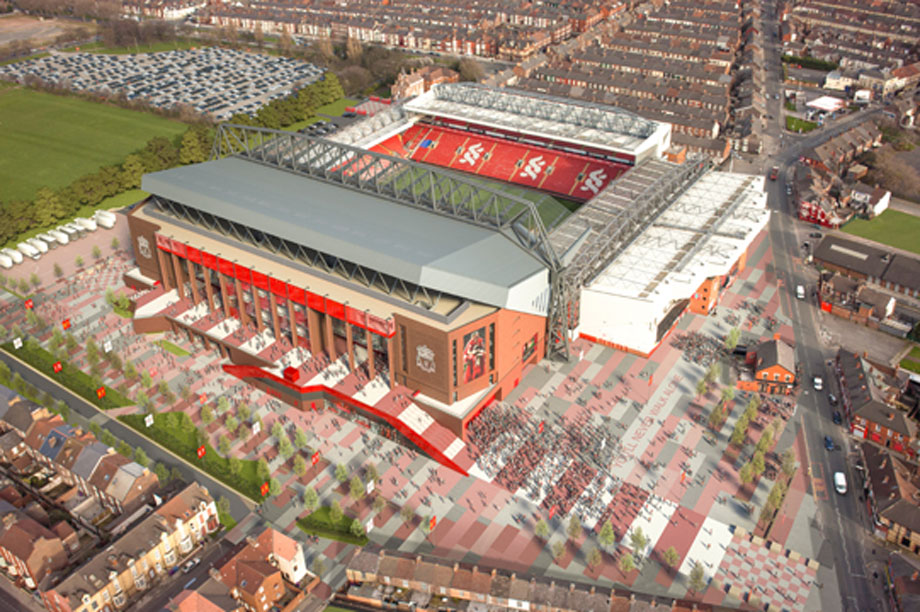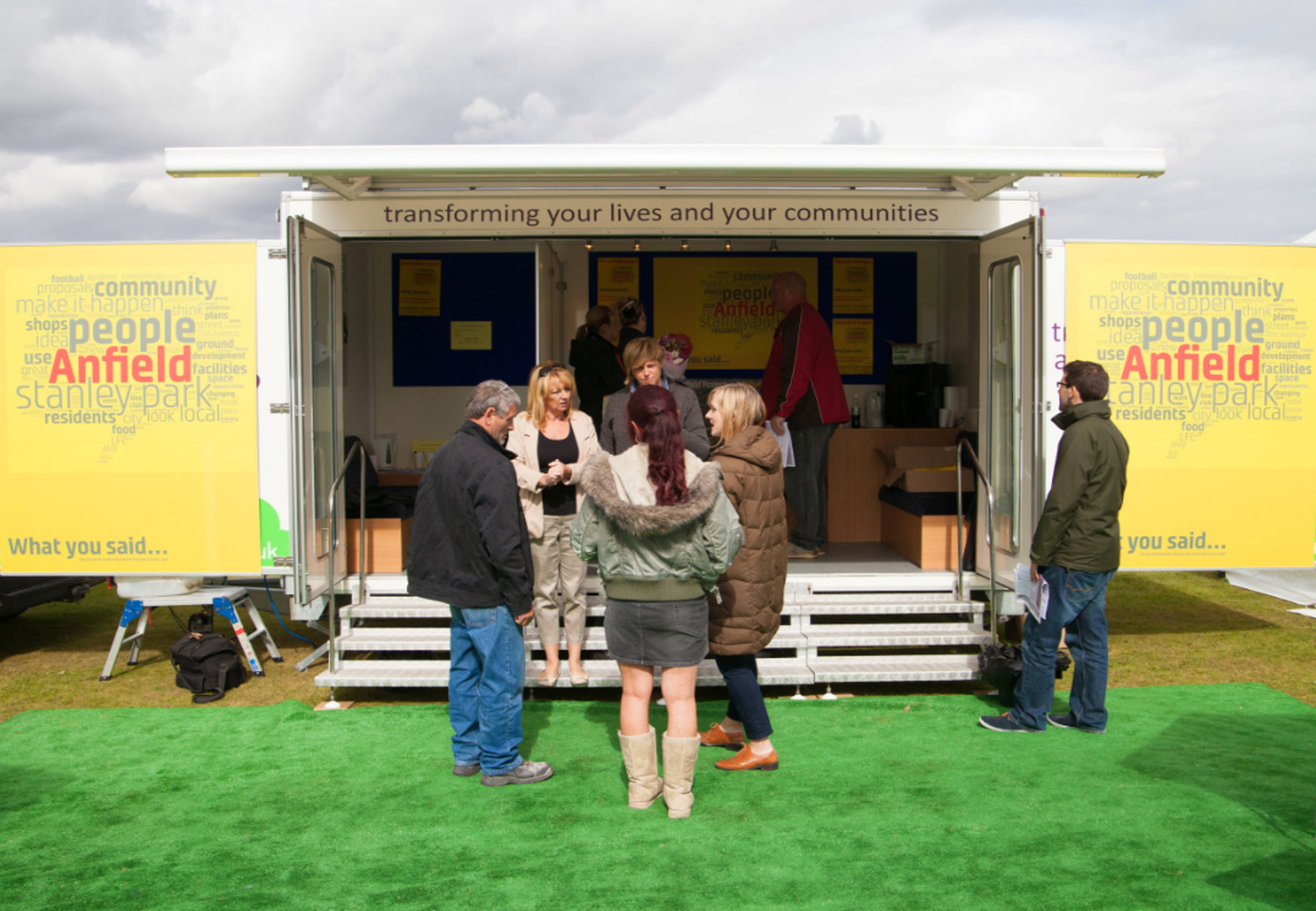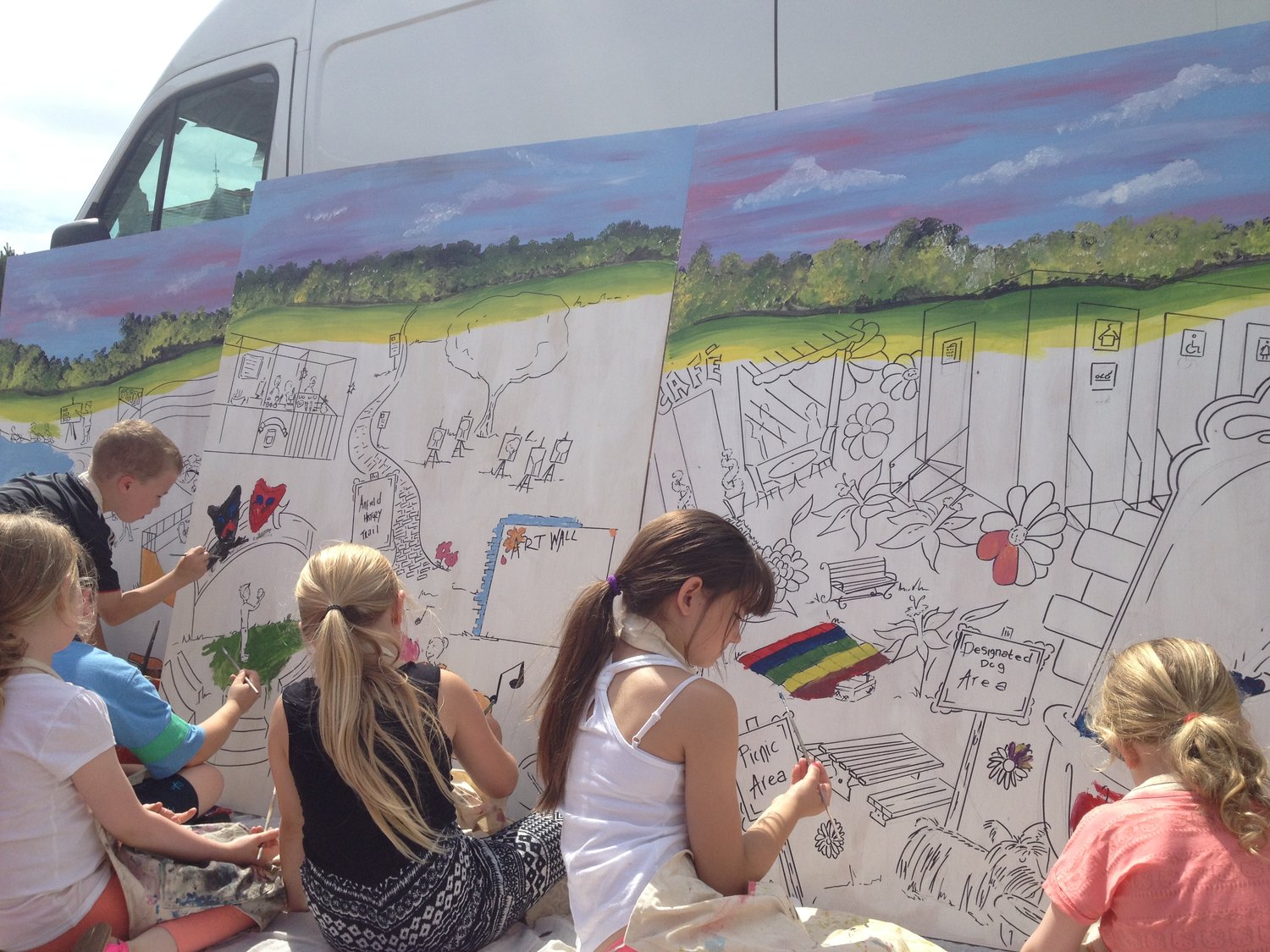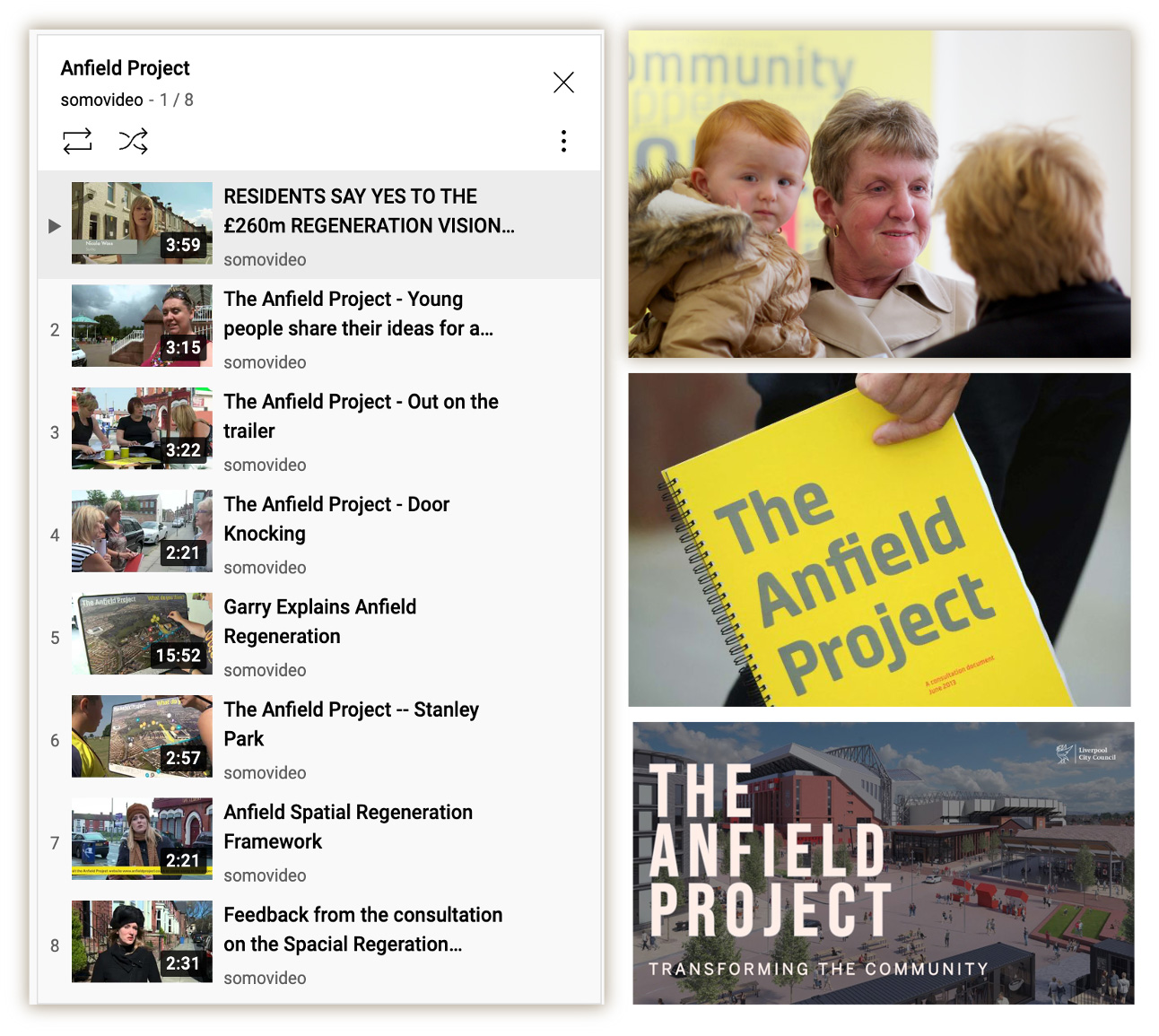The Anfield Project: 2012-2015
Ten years on, we look back at one of So-Mo’s first commissions: Liverpool Football Stadium Expansion and the Regeneration of Anfield.
In 2012, So-Mo was approached to help resolve one of the greatest impasses to occur in the city’s regeneration history. It was only our second commission but remains one of our greatest achievements.

The opportunity
It should have been a great moment. Liverpool City Council, Liverpool Football Club and ‘Your Housing Group’, a large social housing company, had recently announced ambitious plans to transform a part of the city, Anfield. Anfield is home to Liverpool Football Club.

The Problem
Instead of being a cause for celebration, the partners were facing an intractable standoff.
A historic policy of buying up houses around the stadium and leaving them empty had fuelled a belief amongst residents of Anfield that Liverpool FC were buying up houses by stealth, and then deliberately leaving them derelict in an attempt to accelerate the areas decline as a deliberate strategy to keep house prices low. Many residents considered the council to have been complicit in what was seen as an unofficial programme of managed decline.
Several weeks after the big announcement, the community and local business owners were not only refusing to support proposals, but they were also not even prepared to engage in dialogue.
So deep was the level of distrust that one local resident had taken to spending his afternoons driving around the area with a trailer displaying a large hoarding depicting the leader of the council, the CEO of the football club and the CEO of the main housing provider complete with devil horns.

The Brief
Our brief was to break the impasse and find a way for the partners and communities to engage in constructive dialogue. And to ensure planning applications were supported by evidence of widespread and in-depth consultation.
Deep Dive
Having satisfied ourselves that there was a genuine commitment from the partners to fulfil their stated commitments, we spent a long time talking off record to community leaders, activists, local business owners and residents in an attempt to understand what was driving the impasse. We used the trust capacity we held as individuals to open doors and initiate dialogue.
From this, we arrived at a number of conclusions:
- There existed huge amounts of uncertainty in the community about their future
- A deep-seated mistrust of the partners
- An established social norm – not to engage
Our Approach
1) Focus on identifying the biggest point of friction and then overcome it.
The partners had assumed that local people would be excited by the proposals and keen to share their views on the ‘big vision for the area’. But this was far from the case. The people we spoke to saw through a different end of the telescope. Rather than being interested in the big vision, their concerns and interests started at their front door and moved outwards.
Some residents were far more concerned about whether they would be ‘decanted’ and offered an alternative accommodation away from relatives who were providing informal support and childcare. For them, this mattered far more than whether there should be pony trekking in the park. Others wanted to know whether the holes in the drains that let rats into their kitchens would be dealt with and whether windows that leaked would be fixed before summer ended. Some just wanted to know whether they could choose the colour of their own front door.
We accepted invitations into homes, often walking through the only front door amongst rows of ‘tinned up’ houses. We drank multiple cups of tea and sat and listened to people’s stories for as long as it took – for as long as was needed.
Then we came up with a plan. We went back to the partners and explained that some of the biggest trust issues stemmed from a sense of being overlooked & unheard. We advised them that if they wanted to capture views on the big-ticket items, they needed to deal first with the small things – the things that were having a huge impact on people’s lives. Within 5 days, we had taken the consultation guidelines provided by the partners and re-engineered the whole process:
- We started by adding a new first sheet. On this, we had written a different set of questions. Instead of asking people for their thoughts on proposals for the high street, the road layout, the new visionary walkway planned by the club... the initial questions were now completely focused on the individual we were talking to. What were their concerns, what important questions or complaints had gone unanswered?
- We then provided a commitment we’d secured from the partners. We would take down residents comments and questions and within two weeks, they would receive either a resolution to their problem, an answer to their question, or if it was genuinely not possible to do so, a clear explanation as to why not, a definitive course of action and timeframe for resolution. The partners were keen to take part, they bought into this process fully and with good intent.
In the vast majority of cases, the commitments we passed on to them were met. It worked, we were different, the ice was broken and word spread.
This was our big breakthrough but as proponents of behavioural design, we always look for multiple ways to increase visibility and reduce barriers to engagement.

Here are some of the other insights we designed our engagement process around...
2) Make it as easy as possible to engage.
For every opportunity we identified, we asked: what’s the threshold to engagement and can we lower it? How can we make it as easy as possible for people to notice the opportunity and engage, how do we make it easy and attractive to participate? How do we make the experience positive?
Some of the techniques deployed included:
- Use of visual salience: at the time, the local area was devoid of greenery, it was in many places’ bleak and unwelcoming. We transformed a trailer we’d been given into a garden, a welcome oasis in a sea of brick and rubble. We stood out and we peaked curiosity – people crossed the street to ask who were were and what we were doing.
- Interaction design & use of primacy effect: the first experience people encountered when they crossed the street to talk to us was positive and it was an offer not an ask. Instead of asking ‘can we consult you on plans for the area’, we instead offered every passerby a cup of tea and a chat.
- We went to where people already were and then tailoring our approach to best meet the needs and expectations the people and the context. For example, at a local music festival, we provided a free art bus where young people could paint their aspirations for the park whilst other members of the team chatted to their parents.
- We said ‘show us’ by finding ways to agenda set & explore ideas rather than simply ask participants to input into a fixed questionnaire

3) Use of Social Proof
As people began to trust and engage with us, we documented it – we made film after film showing local people engaging, being listened to, and their ideas being fed back. We shared these everywhere, on the local tv channel, on the project website, and in newsletters.
We shared it so that people could see others like them engaging and being listened to. But we also made sure we shared their voices and ideas so there was a public record of what mattered to people at the time. We featured the local junior league football teams that trained in the park, local kids, the residents, and the business owners. As they saw and heard from others like them, it changed behaviour.
By showing film and images of local people engaging and having a positive experience, the social norm slowly shifted from people do not engage with the partners to people are engaging with the partners and the experience is positive.

The Results
A new vision for the area was created, one that reflected the community's ideas and aspirations alongside plans and proposals put forward by the City Council, the Club and the lead housing provider. The Masterplan was submitted without objection and the final project was completed on time and to budget.
To this day, the work So-Mo delivered in Anfield is held up as benchmark of urban renewal.
Other Outcomes
- In-depth engagement and consultation achieved with 1,800 residents & businesses - far more than was required for planning purposes.
- The video sharing the community consultation findings achieved 12,000 views with no negative comments.
- So-Mo was recommissioned 3 more times to support every stage of the planning process.
“So-Mo exceeded our expectations and delivered a truly innovative approach that managed to break a deadlock of over twenty years in Anfield. The £260 million Anfield regeneration programme has been deemed an overwhelming success, transforming an area which had previously lacked hope, to become a neighbourhood looking to the future with aspiration.”
